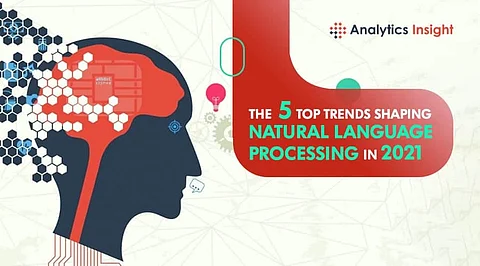The 5 Top Trends Shaping Natural Language Processing in 2021

The growth of NLP is majorly driven by the adoption of cloud-based solutions
2020 has been a promising year in terms of technology advancements. From AI to robotics and cloud to blockchain, businesses across diverse industries have explored such technologies' abilities this year. Natural language processing (NLP) has evolved as a revolutionary technology in the field of AI research focused on processing and utilizing text and speech data to create smart machines and produce insights. Organizations are increasingly implementing its applications to solve a broad range of problems. The most exciting application is building machines capable of discussing with humans about complex topics.
While the rise in smart device usage, adoption of cloud-enabled solutions, and NLP-based applications to improve customer service define the NLP market growth, experts are now exploring ways to unleash its full potential in the coming years.
Thus, looking at future capabilities and how exciting NLP techniques will be in a practical context, Analytics Insight here complied the top 5 trends shaping this technology in 2021.
Cognitive-Communication
Cognitive communication refers to thought processes that allow humans to function successfully and interact eloquently with each other. Processes like orientation, attention, memory, problem solving, and executive function significantly make up cognitive communication abilities. Driven by applications of deep learning, unsupervised, and supervised machine learning, natural language technologies will continue to mold the communication capacity of cognitive computing.
Semantic Search
The requirement for semantic search is anticipated to impact NLP in 2021. This search would involve both NLP and natural language understanding (NLU), requiring a granular comprehension of the central ideas contained within the text. By leveraging POS tagging, a semantic search algorithm can understand what the user query conveys, and hereafter it provides more germane outcomes to users.
Heightened New NLP Use Cases
As NLP is already showing its abilities across all industries, it is expected that the technology will dominate human-machine communication for the foreseeable future. Many companies are now starting to leverage NLP techniques. However, the end-goal is to develop an NLP system that enables them to communicate with machines just as similar as they establish communication with humans. A report shows that the amount of data to be used by NLP systems will grow by a factor of 100 by 2025.
Business Monitoring and Sentiment Analysis
Natural language processing often deals with how computers comprehend, interpret, and work with human language. This is not a new technique, but it is emerging faster thanks to rapid computing advancements and easier access to big data. NLP helps companies in sentiment analysis, essentially a slighter part of social media monitoring. Using NLP, sentiment analysis tools pull out emotionally-charged words that are used to describe a brand and a customer's experience with a brand.
NLP is the Future of Business Intelligence
Natural language processing techniques use mathematical and computational methods to analyze the human-understandable language to make the process of computer interaction smooth and efficient. These techniques can substantially improve business intelligence in several ways, especially when it comes to text analysis. They can be used in BI by assisting in the analysis of customer sentiments, abstracting particular information from a piece of text. NLP also helps in exposing patterns in scattered data, which makes it more suitable for further analysis.
.png)

